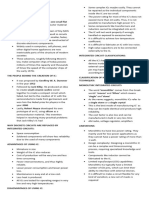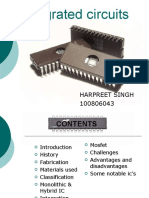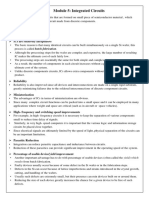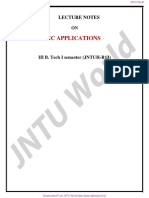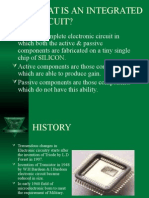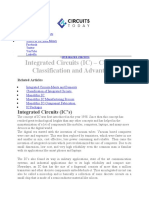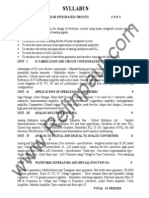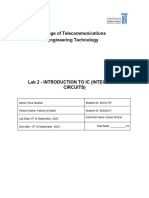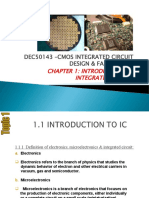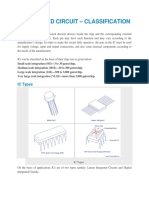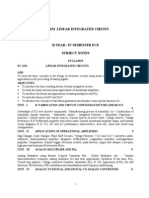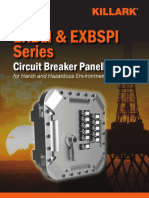0% found this document useful (0 votes)
11 views27 pagesLecture 1 - Introduction
The document outlines the syllabus for the Analog Integrated Circuits course, covering operational amplifiers, the history of integrated circuits (ICs), and their types based on applications, chip packaging size, and fabrication techniques. It details the evolution of ICs from the late 1950s to present, highlighting key developments and technologies such as SSI, MSI, LSI, VLSI, and ULSI. Additionally, it discusses the advantages of ICs over discrete circuits, temperature ranges for different grades of ICs, and the importance of power supply voltages.
Uploaded by
nivethithababu1507Copyright
© © All Rights Reserved
We take content rights seriously. If you suspect this is your content, claim it here.
Available Formats
Download as PPTX, PDF, TXT or read online on Scribd
0% found this document useful (0 votes)
11 views27 pagesLecture 1 - Introduction
The document outlines the syllabus for the Analog Integrated Circuits course, covering operational amplifiers, the history of integrated circuits (ICs), and their types based on applications, chip packaging size, and fabrication techniques. It details the evolution of ICs from the late 1950s to present, highlighting key developments and technologies such as SSI, MSI, LSI, VLSI, and ULSI. Additionally, it discusses the advantages of ICs over discrete circuits, temperature ranges for different grades of ICs, and the importance of power supply voltages.
Uploaded by
nivethithababu1507Copyright
© © All Rights Reserved
We take content rights seriously. If you suspect this is your content, claim it here.
Available Formats
Download as PPTX, PDF, TXT or read online on Scribd
/ 27
